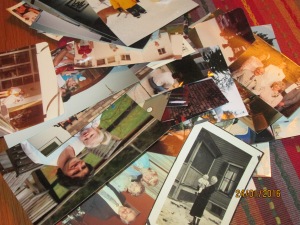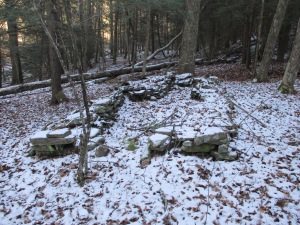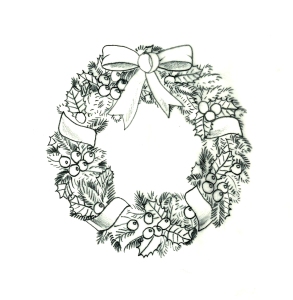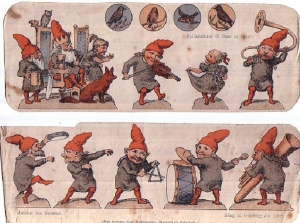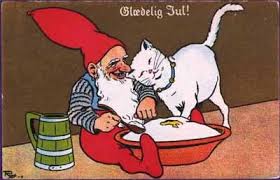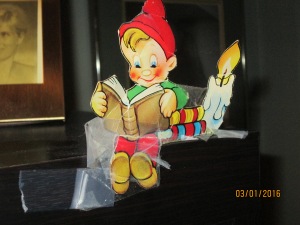My wife and I have had a large box of old photographs sitting on a shelf in a storage room for many years. Every now and then when we were looking for more space – to store yet more stuff, which would likewise sit around largely unused – we would tell ourselves that sooner or later we would have to go through that box of memories and winnow it down to a few keepers. We decided the ideal time would be during a snowstorm when it would be prudent to stay indoors – out of the weather and off the bad roads.
On a Friday night, snow, sleet and freezing rain pelted the region and took away whatever excuses we might have to put this chore off any longer. We took the box off the shelf and, handful by handful, dumped the photos on our dining room table.
Early into the task, it was largely a “keeper, non-keeper” game. “Oh, we have another one of these somewhere.” “This is a terrible picture of my mother; she wouldn’t want this hanging around.” “Gee – I had forgotten all about these two – wonder where they are now?” “Wow! Our river trip! Remember what a great time that was?” “Yes, I remember him well; hated to see him die so young.” “She must have been a remarkable women; wish I had known her!” “I have no idea who this is!”
So the decision-making continues as sleet patters on the dining room windows. We recall births, deaths, good times, and sad times. And something happens in the process.
The experience is strangely exhilarating – and spiritual; and gently humbling. It provided a historical timeline that, if we think about it at all, is generally viewed as mere generational history. It did something else to me. I have been looking for a metaphor to describe the experience. Nothing exact comes to mind, but let me try to describe it.
The photos were in no particular chronological order. The contents of old albums passed down from long-gone friends and relatives were thrown into the box with more recent photos. We had long ago given up any idea of cataloging and storing them in some ordered fashion. Now we could look at the solemn face of a grandparent dead before we were born and the happy grin of a newly arrived great-granddaughter – side by side in the pile. What to make of this juxtaposition?
Many years ago, I was on a raft trip down the Colorado River – ten days through the Grand Canyon. At some point, the Little Colorado joins it, and the raftsmen guided us up several hundred yards into that smaller river and invited us to get out and enjoy the water. The river is normally a bright blue color caused by dissolved travertine and limestone in the water.
It is warm and because of the salts and other minerals leached from the deserts it drains, it provides incredible buoyancy. One could float on it with no effort at all. My raft mates and I happily paddled away until it was time to return to the raft and float back down to the larger river.
As I looked at the photos, I imagined myself in a boat going upstream in the river of life – not unlike the Little Colorado. The feeling was almost palpable. I wasn’t in a boat of course. I was sitting at our dining room table with my wife, but as I scanned the many faces in the photographs, it occurred to me that I was one of them –literally, of course – since I was in many of the photos, but I was also part of the great spectrum of life they represented.
People were all around me in my imagined boat, and many were in the water nearby, floating downstream, waving and smiling and shouting greetings. “Hello there! See you later!” On our own boat, some were preparing to jump off the back into the water to join those already there. I realized that we were picking up their replacements on the front of the boat, and my own position on the boat had changed. I had once been in the bow, having been helped in, and was learning my duties on life aboard. I had gradually moved amidships to help with the steering and handling. Now, I thought, I am gradually moving toward the stern, largely a passenger, and getting ready to jump in and join those in the water – and make room for new arrivals.
We kept about a fifth of the old photographs. We will make a second pass on another wintry day and perhaps make some categorical sense. Perhaps we will digitize them and put them on a disk we can view on our television. I realized though, no end goal of arranging these pictures can equal the process of sifting through them. Like life itself, it’s the journey that counts. As great minds have taught us, “Time is an illusion,” and “Nature does not know extinction.”
Books by Chuck Thurston and his wife Heidi can be found on Amazon and Indigo Sea Press. They live in Kannapolis, NC and frequently take a camera to family gatherings. The “great minds” quoted above belong to Albert Einstein and Werner Von Braun.

